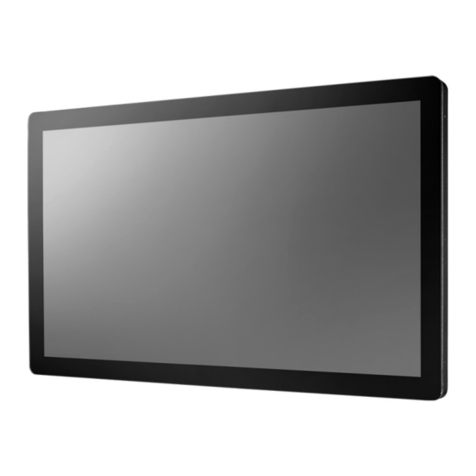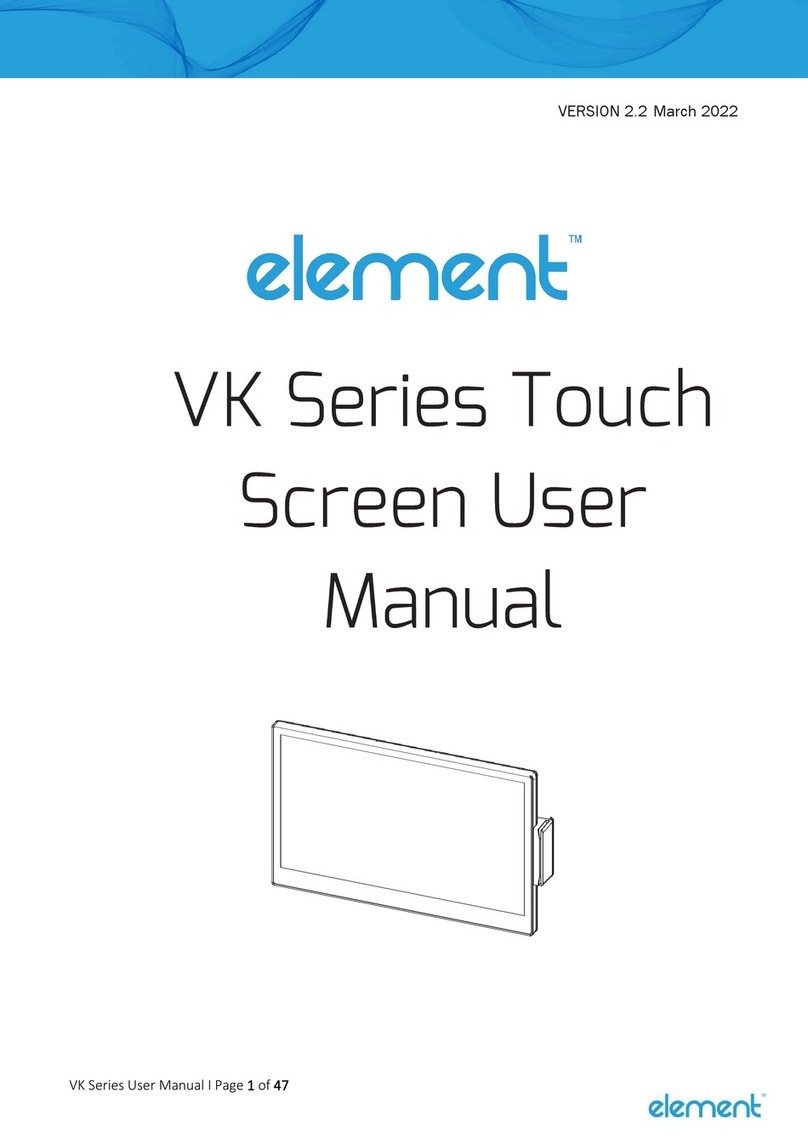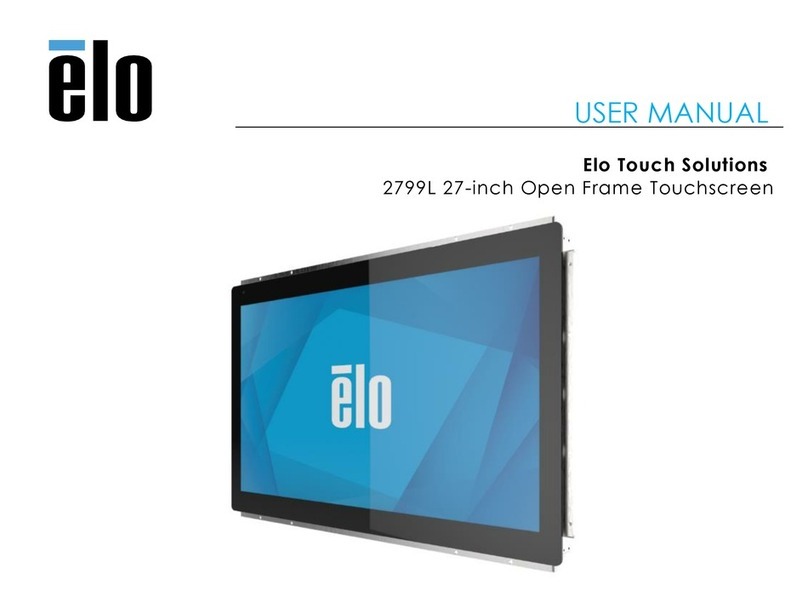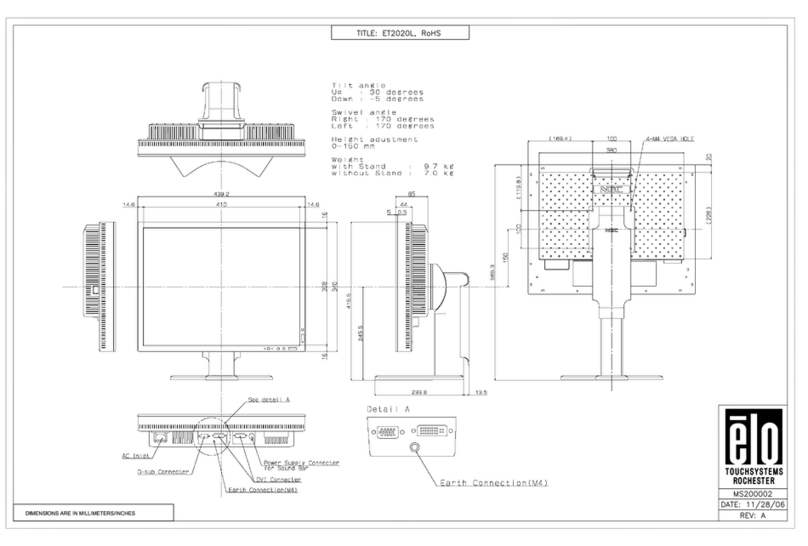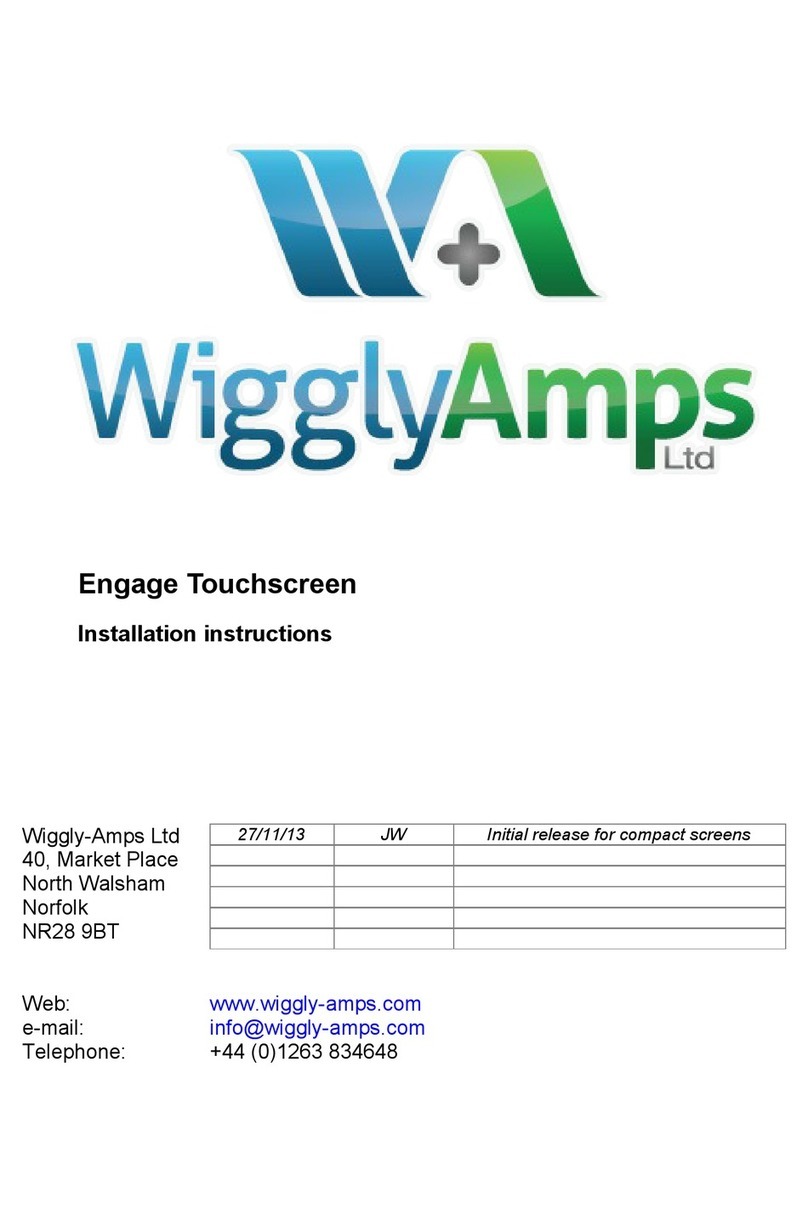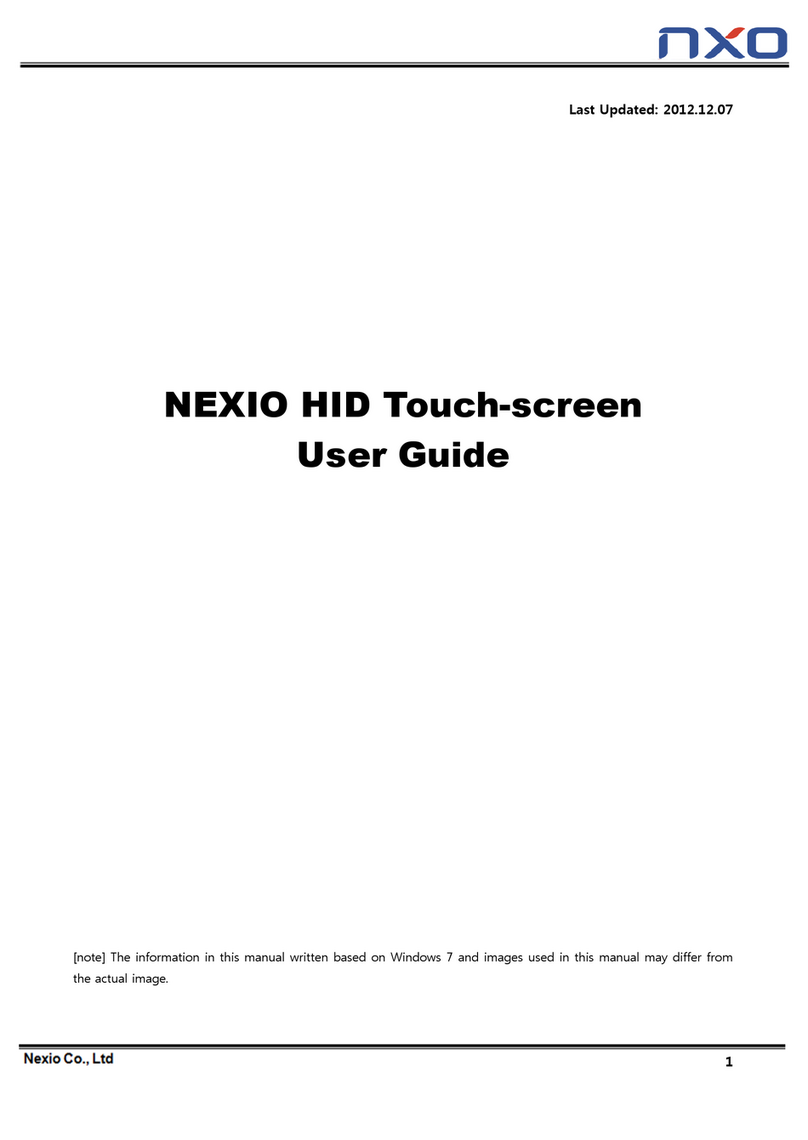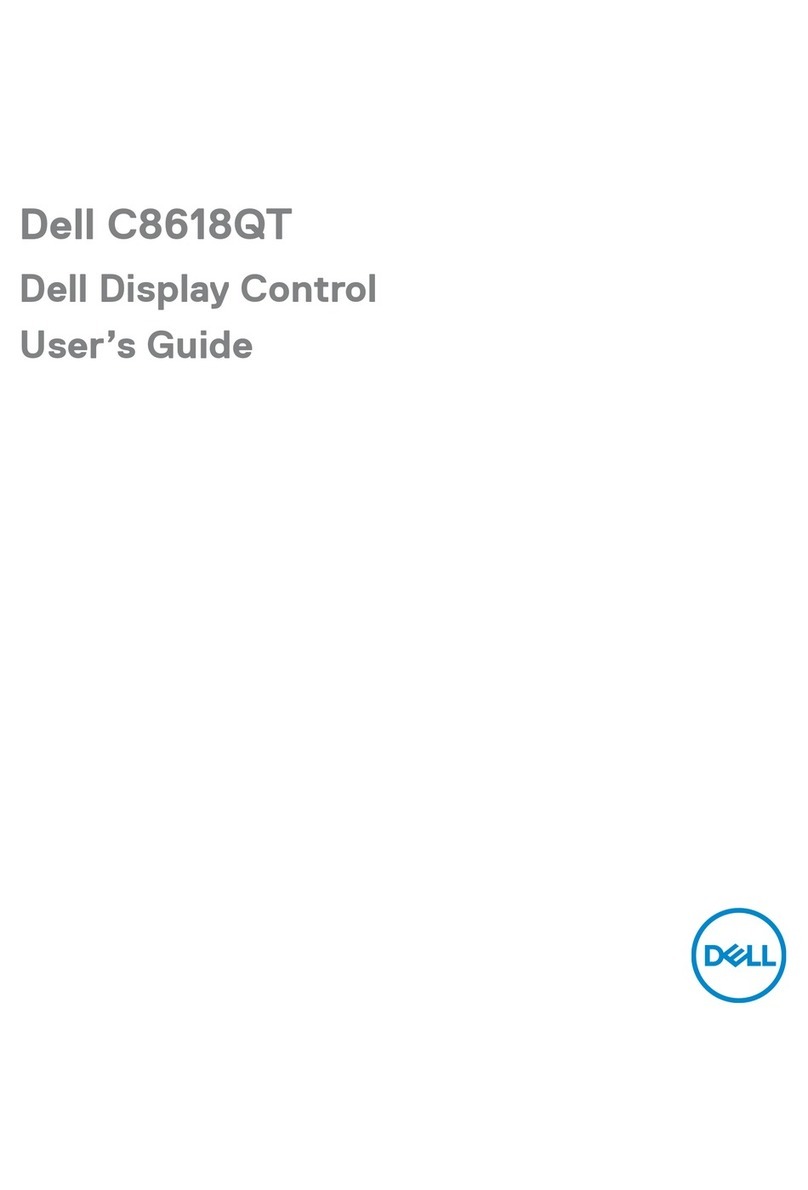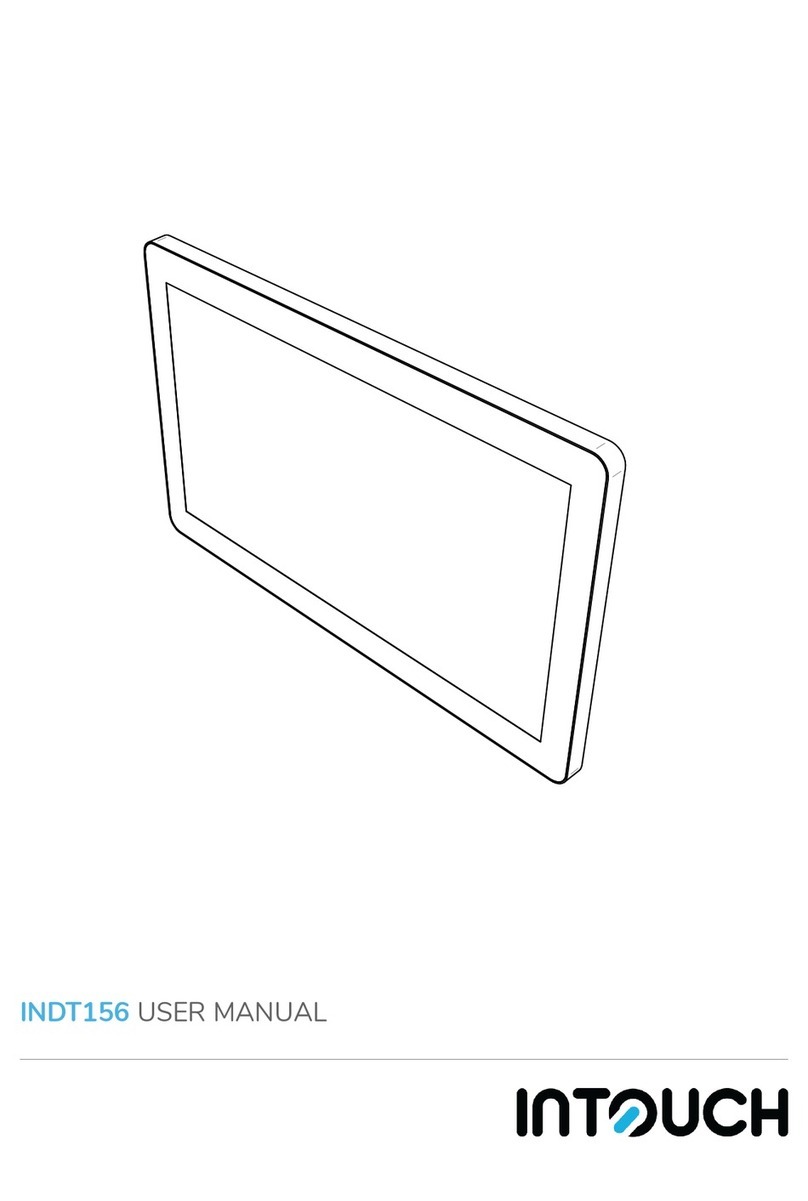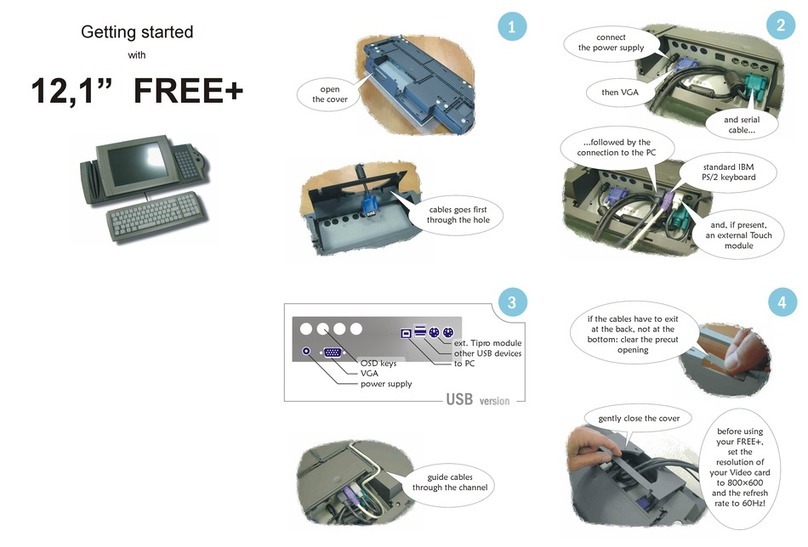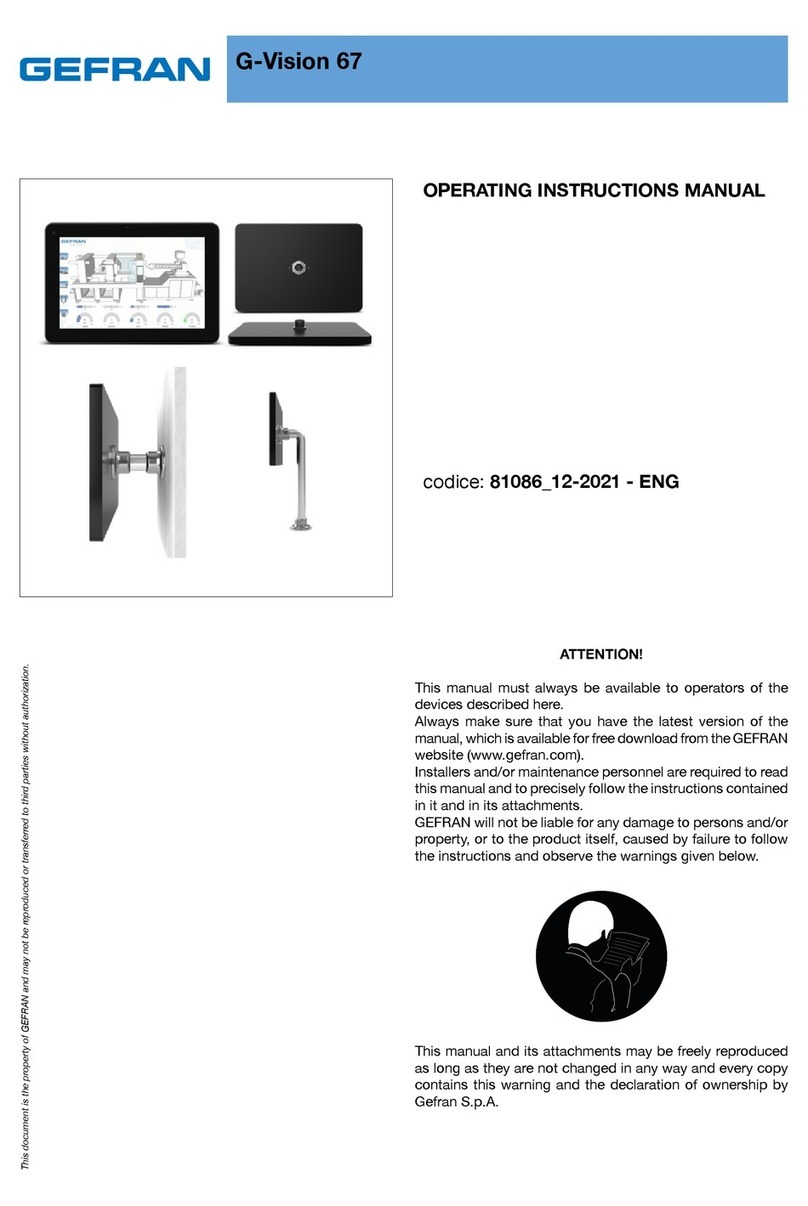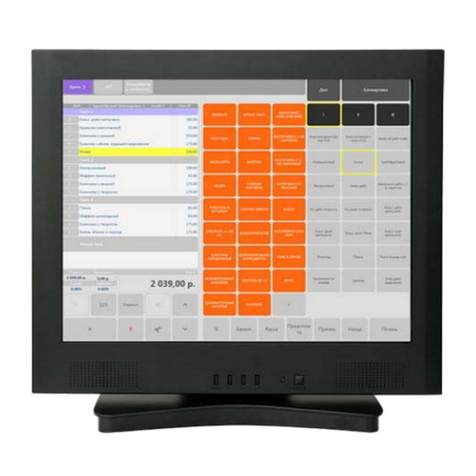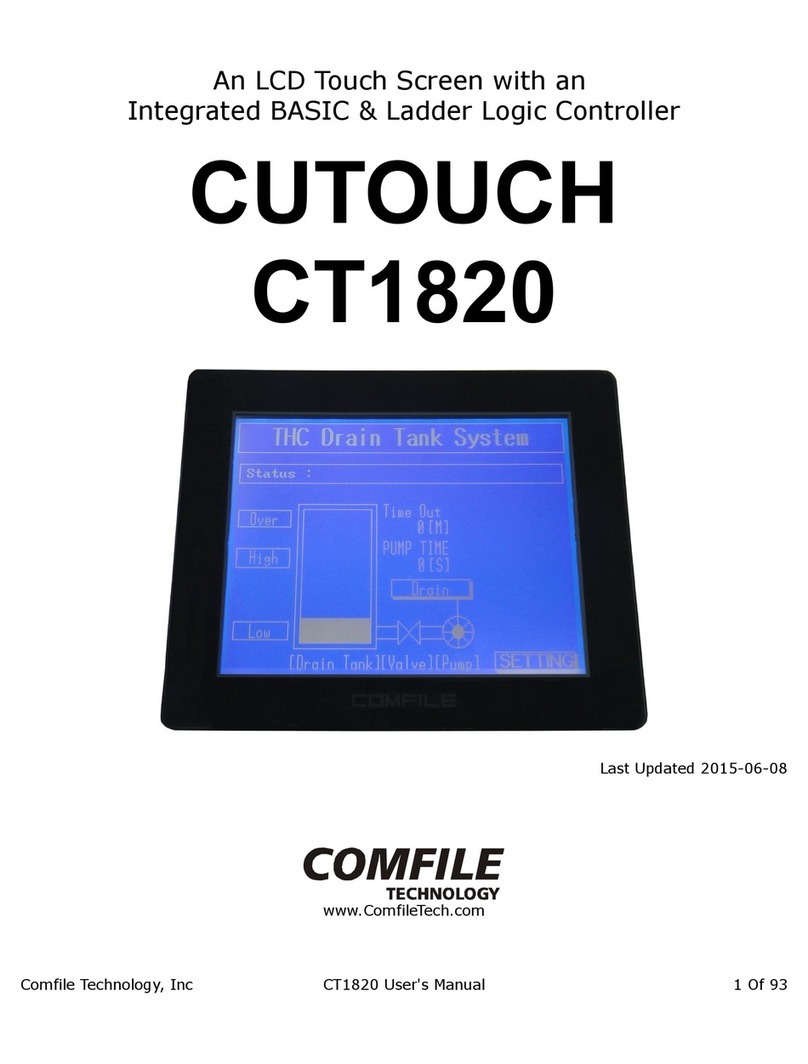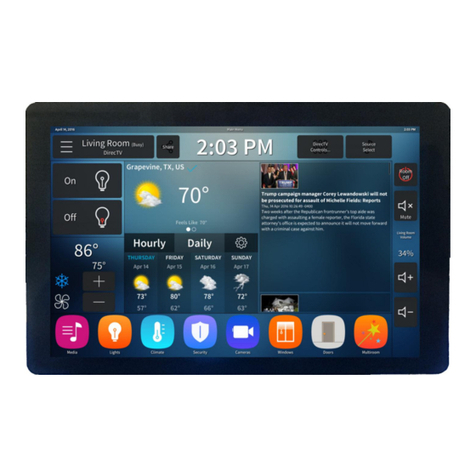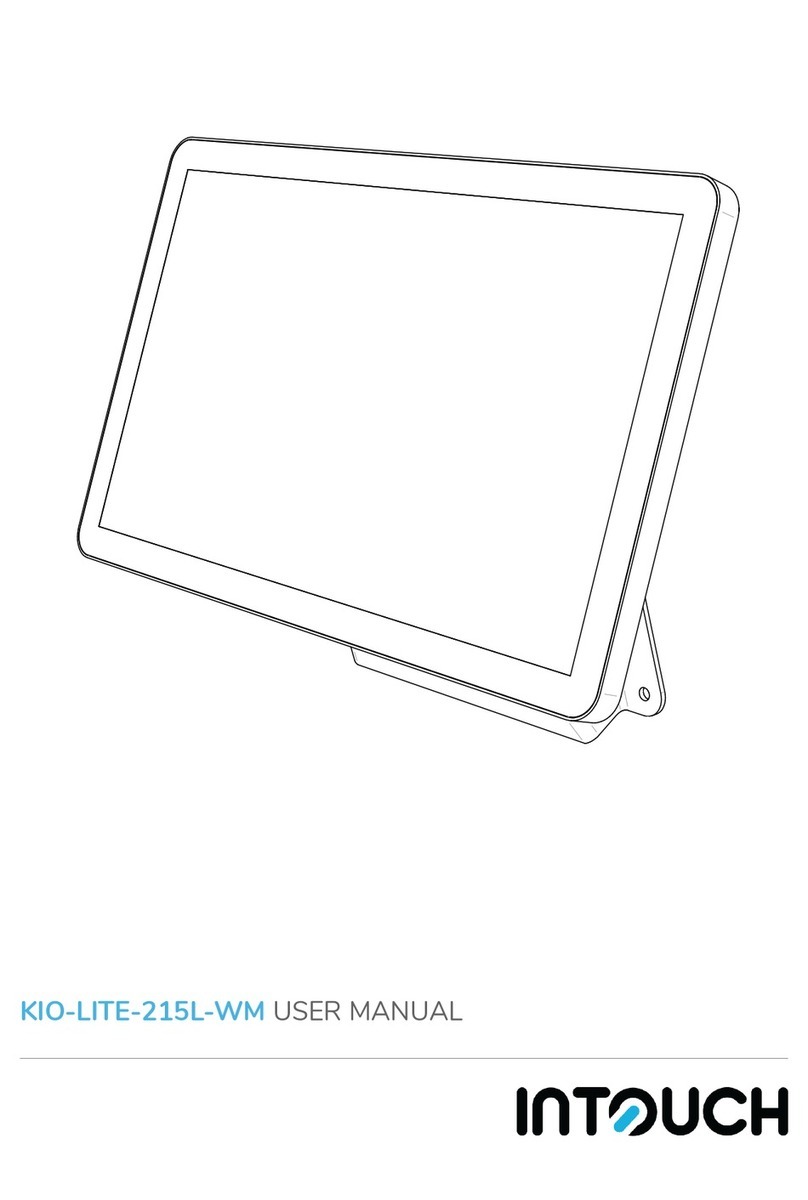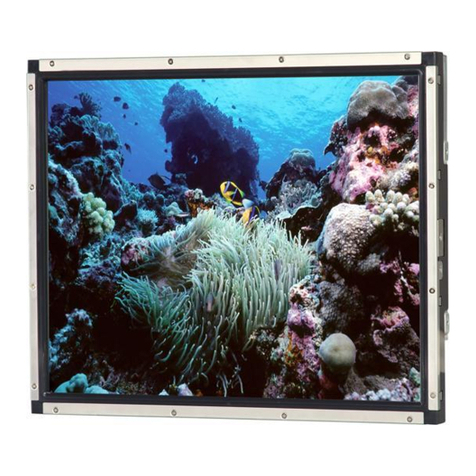•Check the appearance of the unit when it is unpacked. Do not use the unit if any damage or deformation is
found. Failure to do so may lead to fire, damage or malfunction.
•For use in a facility or for a system related to nuclear energy, aerospace, medical, traffic equipment, or
mobile installations, please consult your local distributor.
•Operate (or store) MONITOUCH under the conditions indicated in this manual and related manuals. Failure
to do so could cause fire, malfunction, physical damage or deterioration.
•Understand the following environmental limits for use and storage of MONITOUCH. Otherwise, fire or
damage to the unit may result.
- Avoid locations where there is a possibility that water, corrosive gas, flammable gas, solvents, grinding
fluids or cutting oil can come into contact with the unit.
- Avoid high temperature, high humidity, and outside weather conditions, such as wind, rain or direct
sunlight.
- Avoid locations where excessive dust, salt, and metallic particles are present.
- Avoid installing the unit in a location where vibration or physical shock may be transmitted.
•Equipment must be correctly mounted so that the main terminal of MONITOUCH will not be touched
inadvertently. Otherwise, an accident or electric shock may occur.
•Check periodically that terminal screws on the power supply terminal block and fixtures are firmly tightened.
Loosened screws may result in fire or malfunction.
•Tighten terminal screws on the power supply terminal block equally to the specified torque. Improper
tightening of screws may result in fire, malfunction, or other serious trouble.
•Tighten mounting screws on MONITOUCH equally to the specified torque. Excessive tightening may distort
the panel surface. Loose tightening may cause MONITOUCH to come off, malfunction or be short-circuited.
•MONITOUCH has a glass screen. Do not drop or give physical shock to the unit. Otherwise, the screen
may be damaged.
•Connect the cables correctly to the terminals of MONITOUCH in accordance with the specified voltage and
wattage. Over-voltage, over-wattage, or incorrect cable connection could cause fire, malfunction or damage
to the unit.
•Be sure to establish a ground of MONITOUCH. The FG terminal must be used exclusively for the unit with
the level of grounding resistance less than 100Ω. Otherwise, electric shock or a fire may occur.
•Prevent any conductive particles from entering into MONITOUCH. Failure to do so may lead to fire,
damage, or malfunction.
•Do not attempt to repair MONITOUCH at your site. Ask Hakko Electronics or the designated contractor for
repair.
•Do not repair, disassemble or modify MONITOUCH. Hakko Electronics Co., Ltd. is not responsible for any
damages resulting from repair, disassembly or modification of MONITOUCH that was performed by an
unauthorized person.
•Do not use a sharp-pointed tool when pressing a touch switch. Doing so may damage the screen. Doing so
may damage the screen.
•Only experts are authorized to set up the unit, connect the cables or perform maintenance and inspection.
•Lithium batteries contain combustible material such as lithium or organic solvent. Mishandling may cause
heat, explosion or ignition resulting in fire or injury. Read related manuals carefully and handle the lithium
battery correctly as instructed.
•Do not press two or more positions on the screen at the same time. If two or more positions are pressed at
the same time, the switch located between the pressed positions will be activated.
•Take safety precautions during such operations as setting change during running, forced output, start, and
stop. Any misoperation may cause unexpected machine motions, resulting in machine accident or damage.
•In facilities where a failure of MONITOUCH could lead to accident threatening human life or other serious
damage, be sure that the facilities are equipped with adequate safeguards.
•At the time of disposal, MONITOUCH must be treated as industrial waste.
•Before touching MONITOUCH, discharge static electricity from your body by touching grounded metal.
Excessive static electricity may cause malfunction or trouble.
CAUTION
